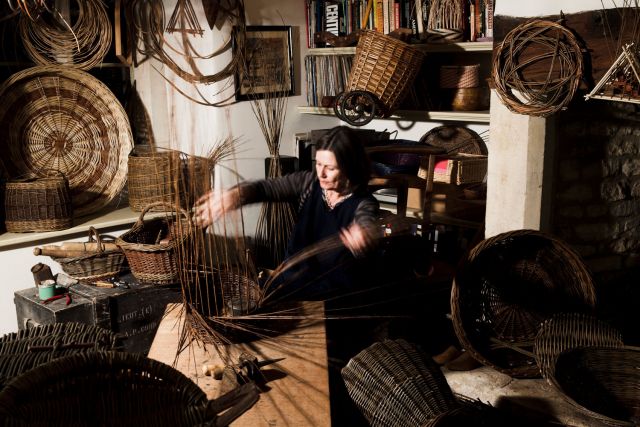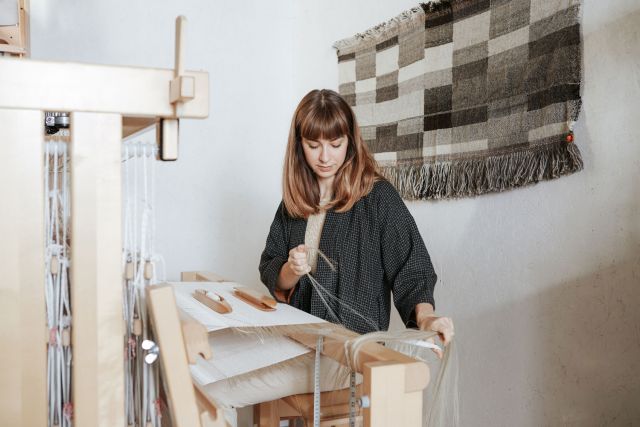This dark earth-coloured vessel was hand-shaped from a solid block of clay, which was stretched by making a hole and then pushing the clay outwards. The stretching breaks open the clay structure and creates surface patterns very similar to those naturally occurring in the land around us. Patricia aims to achieve natural surfaces on a controlled form. The textures are inspired by patterns found in the landscape where she lives, formed by the effects of humans, animals and the climate.
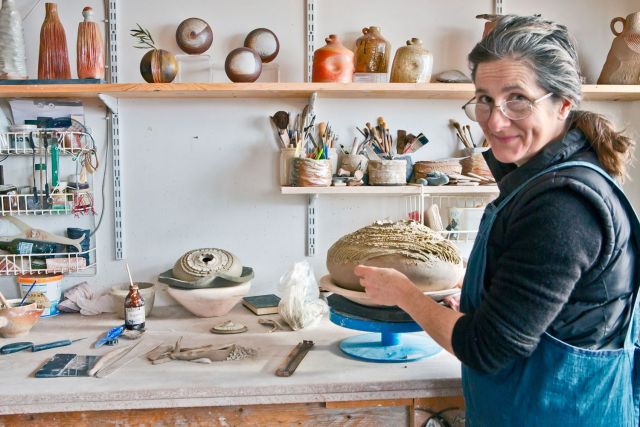
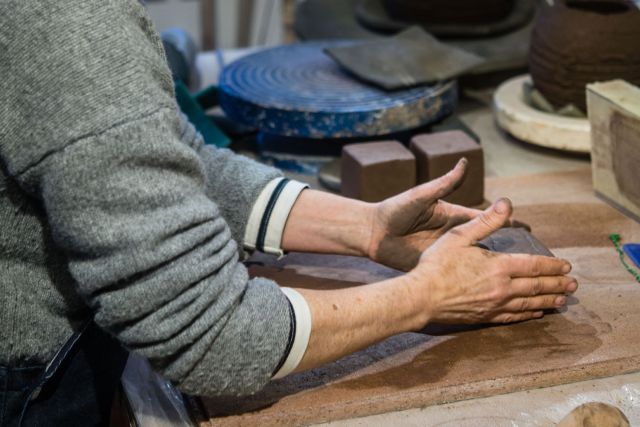
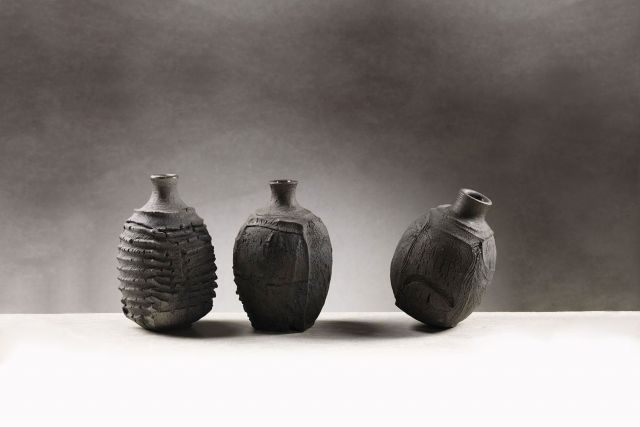
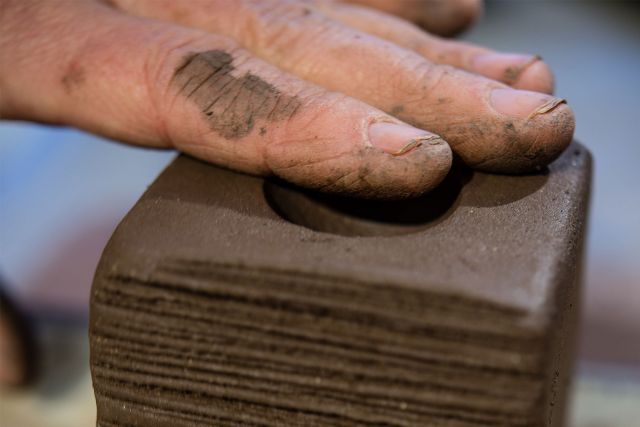
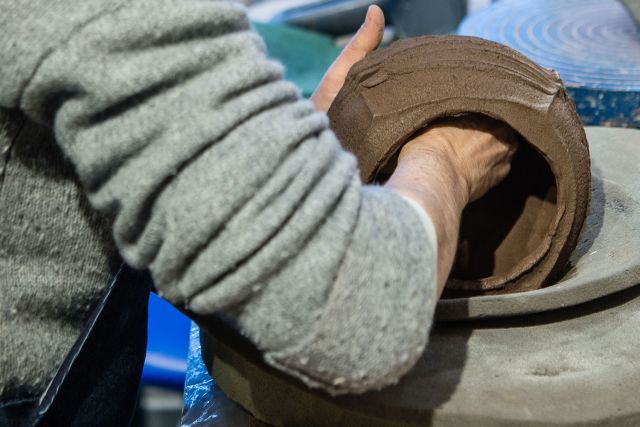
Patricia Shone
- Ceramicist
- Ardvasar, United Kingdom
- Master Artisan
- Recommended by Craft Scotland
By appointment only
+44 1471844321
Skye's landscape reflected in clay
- • Patricia fell in love with ceramics at school
- • Japanese potter Shozo Michikawa encouraged her
- • It took 15 years to develop her style and technique
Patricia Shone had two early passions: ceramics and cooking. Though she took a degree in ceramic design, her career initially centred on cooking, and she worked as a chef in top restaurants in the UK and Italy. One particular job took her to the Isle of Skye, where she met her now husband, and the couple have remained on the island ever since. Her cheffing career proved less enduring, however, as she soon decided she needed a change. “So I stopped working and started playing with clay again”. Her husband helped her build a small Raku kiln out of an oil drum, and she gradually got back into firing. She now makes vessels inspired by the textures of the wild landscapes around her on Skye.
Read the full interviewWorks
Photo: © Shannon Tofts

Photo: © Shannon Tofts
This piece is inspired by the Korean Moon Jar tradition. The firing process does not affect the textures greatly but has a big impact on the colour and density of the piece. Low temperature raku firing gives a soft and gentle range of greys and blacks.

Photo: © Shannon Tofts
This jar has been hand-formed from iron bearing clay and then wood-fired. The rich colours and surface of this piece are reminiscent of banks of wet peat common in the part of Scotland where Patricia lives. High temperature wood-firing allows iron bearing clays to develop rich, warm earth colours. The fine ash travelling through the kiln reacts with the clay surface to form a natural glaze and the flame path across the pots can be followed by this glaze formation.

Photo: © Shannon Tofts
The peat bogs of the Isle of Skye hold and preserve their secrets, sometimes for millennia. The jar is an innately human form for containing and preserving the precious things of our existence.






